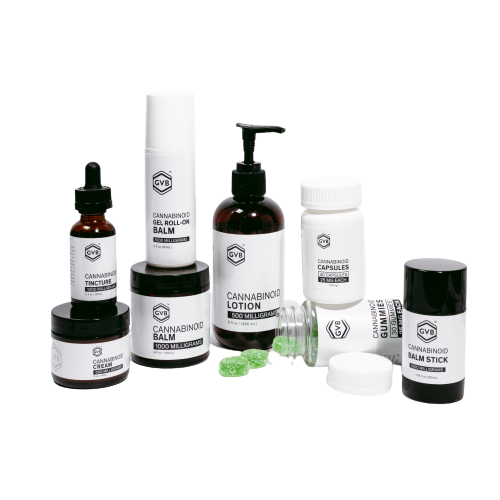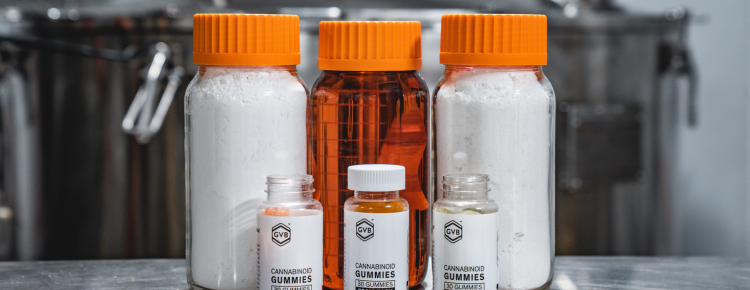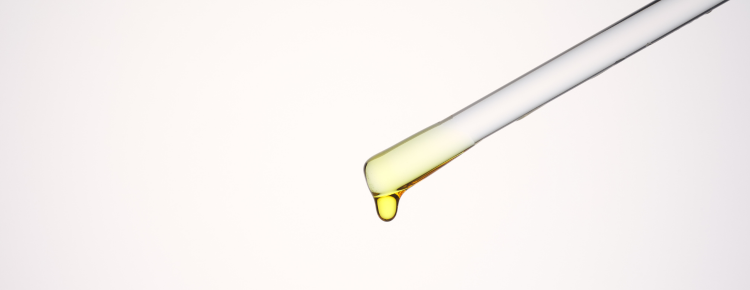The cannabinoid market is nothing like it was a decade ago. In 2012, the very first CBD products started to become available, and it wasn’t until 2018 that the CBD industry received an official nod from the US federal government.
On the other hand, the cosmetics industry has stayed relatively stable over the last 10 years. It hasn’t grown considerably, but it hasn’t declined at all. Interest in cosmetic products is the same as it always has been, but the cosmetics people are using are very different than they once were.
In this guide, learn the current size of the US cosmetics industry and the exact ways it has evolved in recent years. Then, discover the best hemp cannabinoids currently on the market that you can add to cosmetic products.
What is the current size of the US cosmetics industry?
According to a recent report from market analytics firm IBISWorld¹, the US cosmetics market is expected to be valued at just over $49 billion in 2022, a 1.5% increase over 2021’s total. As a result, cosmetics is among the larger consumer products industries, but it doesn’t show much room for overall growth.
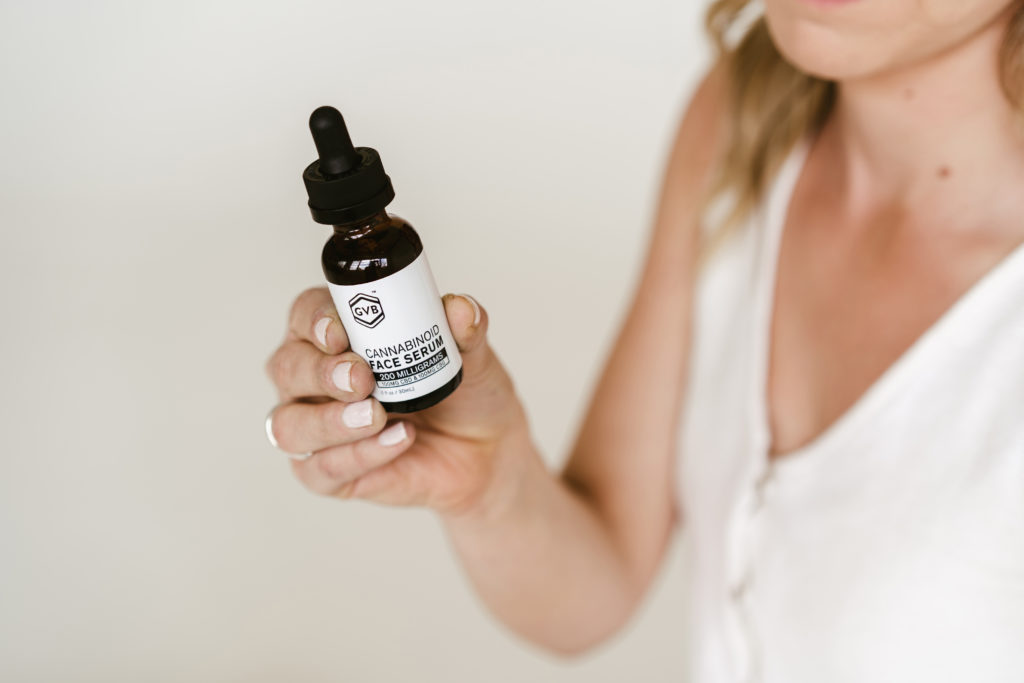
Has the cosmetics market grown in recent years?
No, the US cosmetics market has not grown considerably over the last decade. The best year for cosmetics between 2012 and 2022 was 2015 at $55.4bn, and the worst year was 2020 at $44.7bn. As you can see, the cosmetics market has floated around the $50 billion annual revenue mark for quite some time.
How has the cosmetics market changed over the last decade?
The cosmetics market may not have gotten any larger or smaller over the last 10 years, but that doesn’t mean it hasn’t changed. Considerable shake-ups have taken place under the hood of the cosmetics industry, and outdated products are being phased out while newer ingredients are being added to the market.
Overall market size has stayed steady
If you look at market conditions closely, it’s surprising that the cosmetics industry hasn’t diminished from its stable $50 billion yearly revenue. During the last decade, the profound dangers of dozens of cosmetic substances² have come to light, and thousands of products have been taken off the shelves permanently.
To make up for the parabens, PFAs, methylene glycol, and other substances that are thankfully no longer present in cosmetics, new ingredients must have emerged within the cosmetics market or else the entire industry would have collapsed. As the raw data suggest, cosmetics manufacturers have ditched synthetic toxins and have started embracing natural healing substances instead.
Natural substances are on the rise
Whether it’s aloe vera, vitamin C, hyaluronic acid, essential oils, or even CBD, cosmetic products are now packed with natural substances believed to be even more effective than the dangerous ingredients they in some cases replaced. Access to the internet and its treasure trove of publicly accessible medical studies has given consumers the tools they need to make their own health and beauty decisions, and they’re starting to recognize the incredible potential present in nature’s unaltered bounty.
The population is aging
The US Census bureau indicates that by 2060, more than a quarter of Americans will be over 65³, an unprecedented “aging-out” of the US population that will have a profound impact on the cosmetics market. Interest in anti-aging compounds that don’t have any side effects will rise, and as budgets become constrained to Medicare and Medicaid, affordability will also be a prime concern.
Can you use cannabinoids in cosmetics?
Yes, you can certainly use cannabinoids in cosmetics, and the practice has become quite widespread. Cannabinoids that are commonly used in cosmetics include CBD, CBG, CBC, and CBN. The latter cannabinoid isn’t used all that commonly, but CBD, CBG, and CBC have all been investigated for their usefulness against conditions commonly treated topically.
What do cannabinoids do in cosmetics?
Consumers don’t just want cosmetics that make them look better anymore. They want cosmetics that actually make them better — in other words, cosmetics with healing properties. That’s where cannabinoids come into the picture.
Most substances present in Cannabis sativa flowers are believed to have at least some anti-inflammatory or antioxidant utility. Since oxidative stress is now widely known to be the primary cause of skin aging, antioxidants have become incredibly popular in cosmetic products over recent years. Anti-inflammatory substances, in addition, can often directly reduce the redness of skin conditions like acne, eczema, or rosacea.
Benefits of adding cannabinoids to cosmetics
As far as cosmetic ingredients go, cannabinoids are practically ideal. Cannabinoid extracts are easy to add to many different cosmetic formulations including lip balms, serums, and moisturizers, and cannabinoids are believed to have an overall positive effect on your skin health without causing considerable side effects.
“CBD” has become a buzzword within the online natural health community, so the inclusion of this cannabinoid often adds value to cosmetic products in and of itself. This effect has expanded recently to also apply to CBG and CBC, which consumers are starting to recognize as potentially being just as, or potentially even more useful in cosmetics as CBD.
What are the best cannabinoids to add to cosmetics?
If you don’t know which cannabinoids to include in your products, learn more about the most popular options below:
1. CBD
The most popular and well-known hemp cannabinoid by far, cannabidiol (CBD) has been investigated extensively⁴ for its potential antioxidant and anti-inflammatory benefits, and consumers generally believe it is at least somewhat useful in this regard. CBD should not have any noticeable psychoactive effects when applied topically in the form of a cosmetic, but it will provide benefits at the site of application for 3-6 hours.
2. CBG
Cannabigerol (CBG) has received a lot of attention recently due to research into its usefulness for bacterial infections⁵. Resultantly, CBG has become a red-hot popular substance in hand creams and other cosmetics designed to prevent transmissible illness. CBG is also rapidly gaining popularity in anti-acne topicals.
3. CBC
Cannabichromene (CBC) is still considered to be a rare cannabinoid, but consumers are catching onto research into this cannabinoid’s activity at your TRP receptors⁶, the primary neuroreceptors involved in inflammation. Manufacturers are accommodating this trend by infusing anti-inflammatory cosmetics with CBC.
4. CBN
The THC metabolite cannabinol (CBN) is currently the subject of a clinical trial⁷ into its potential wound-healing attributes. At present, CBN remains very rare in topical products, but hemp brands would be wise to watch this emerging space within the cannabinoid topical industry closely.
5. CBDa, CBGa, CBDV, etc.
CBD, CBG, CBC, and CBN are hardly the limit of the cannabinoids present in Cannabis sativa. Most cannabinoids, for instance, also have carboxylic acid forms with unique properties. CBDa isn’t the same chemically as CBD, for instance, and CBDV is another unique compound in itself. Over the years, the cannabinoid cosmetic industry will widen to accommodate even more of these natural healing substances.
Which cannabinoid-infused cosmetics products are the most popular?
Not sure which product types are best for infusing CBD, CBG, or CBC into? Here are the most popular types of cannabinoid cosmetics currently on the market.
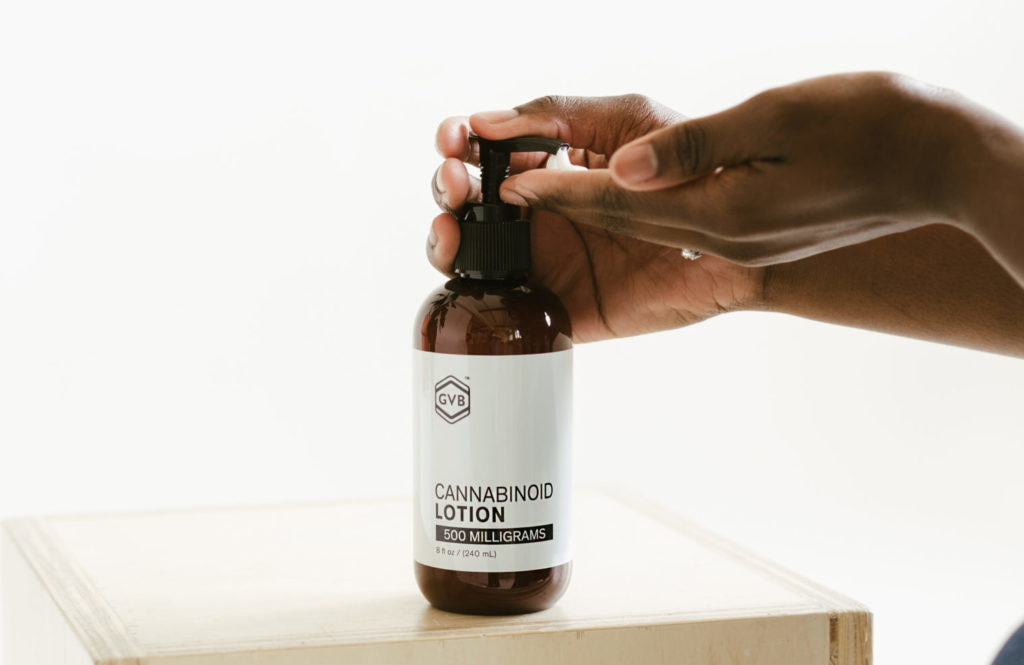
Lip balms
Simple, affordable, and easy to produce, cannabinoid lip balms have been on the market longer than practically any other type of cannabinoid cosmetic. In this day and age, it can be a struggle to make a cannabinoid lip balm product stand out, but the addition of new cannabinoids to your ingredient pool allows new opportunities for diversification.
Moisturizers
It’s relatively easy to add CBD, CBG, or CBC to moisturizers, and there’s a general consensus among consumers that these substances improve moisturization via the reduction of inflammation and oxidative stress. Cannabinoids are common in both face moisturizers and products designed for your body and hands.
Serums
Relatively new to the market are serums: light, water-based cosmetics that you usually apply to your face. Designed to deliver beneficial substances deep into your skin with as few ingredients as possible, serums can be marketed at high prices as long as they feature formulations that are deservingly high-quality. Consumers generally view the inclusion of cannabinoids in serums as a value addition.
Body lotions and oils
Cannabinoid body lotions and oils are essentially no different than cannabinoid tinctures, which makes them affordable and easy to make. Used for massage, moisturization, and other purposes, adding cannabinoids to body oils is believed to make these products more therapeutic.
How to add cannabinoids to your cosmetics line
Using cannabinoids in cosmetics is no longer a risky move. Consumers have had enough time to accept the benefits of these essentially risk-free compounds, and demand for cannabinoid-infused cosmetics continues to rise.
Ten years from now, it’s likely that the US cosmetics market will be roughly the same overall size that it is today. Cannabinoid-infused cosmetics will take up a much larger share of the market, however, and every new cannabinoid cosmetic product launch will serve as a stepping stone along the way.
Pick the right cannabinoid or cannabinoids, choose a formulation type, and find a manufacturer. Within no time, you’ll have claimed your place within one of the biggest cosmetics industry shake-ups of the century.
Cannabinoids & cosmetics FAQs
Which cannabinoid is best for skin?
So far, it’s looking like CBG will shape up to be the superstar of the cannabinoid skincare industry. There’s a lot we don’t know about all of the cannabinoids present in hemp, however, so it’s too soon to decide if one cannabinoid is truly better than all the rest at keeping your skin healthy.
Are cannabinoids absorbed through the skin?
Yes, cannabinoids are naturally absorbed through the skin, but they usually must be accompanied by some form of carrier to achieve ideal penetration. As a result, water-based cannabinoid topicals are often preferred over oil-based equivalents since using a water base allows topicals to absorb with greater efficacy — even if they contain oil-based ingredients.
Does CBD work in skincare?
CBD has not been approved as an ingredient in any skincare products, so we can’t provide any official data regarding its usefulness as a skincare substance. What we can say, however, is that CBD users who apply this cannabinoid to their skin often report incredible results. According to users, these improvements could never have been accomplished with non-cannabinoid products.
Sources
- 1. IBISWorld – Industry Market Research, Reports, and Statistics. (2022). IBISWorld. https://www.ibisworld.com/industry-statistics/market-size/cosmetic-beauty-products-manufacturing-united-states/
- 2. Zanolli, L. (2019, July 2). Pretty hurts: are chemicals in beauty products making us ill? The Guardian. https://www.theguardian.com/us-news/2019/may/23/are-chemicals-in-beauty-products-making-us-ill
- 3. Nasser, H. E. (2021, October 9). The U.S. Joins Other Countries With Large Aging Populations. Census.Gov. https://www.census.gov/library/stories/2018/03/graying-america.html
- 4. Atalay, S., Jarocka-Karpowicz, I., & Skrzydlewska, E. (2019). Antioxidative and Anti-Inflammatory Properties of Cannabidiol. Antioxidants, 9(1), 21. https://doi.org/10.3390/antiox9010021
- 5. Aqawi, M., Sionov, R. V., Gallily, R., Friedman, M., & Steinberg, D. (2021). Anti-Bacterial Properties of Cannabigerol Toward Streptococcus mutans. Frontiers in Microbiology, 12. https://doi.org/10.3389/fmicb.2021.656471
- 6. Izzo, A. A., Capasso, R., Aviello, G., Borrelli, F., Romano, B., Piscitelli, F., Gallo, L., Capasso, F., Orlando, P., & di Marzo, V. (2012). Inhibitory effect of cannabichromene, a major non-psychotropic cannabinoid extracted from Cannabis sativa, on inflammation-induced hypermotility in mice. British Journal of Pharmacology, 166(4), 1444–1460. https://doi.org/10.1111/j.1476-5381.2012.01879.x
- 7. INM-755 (Cannabinol) Cream for Treatment of Epidermolysis Bullosa. (2022). US National Library of Medicine. https://clinicaltrials.gov/ct2/show/NCT04908215

